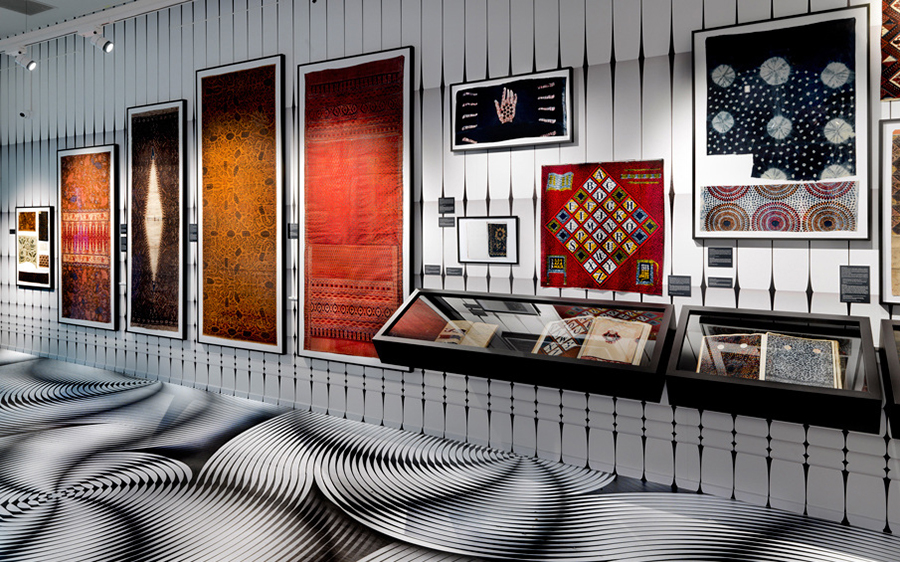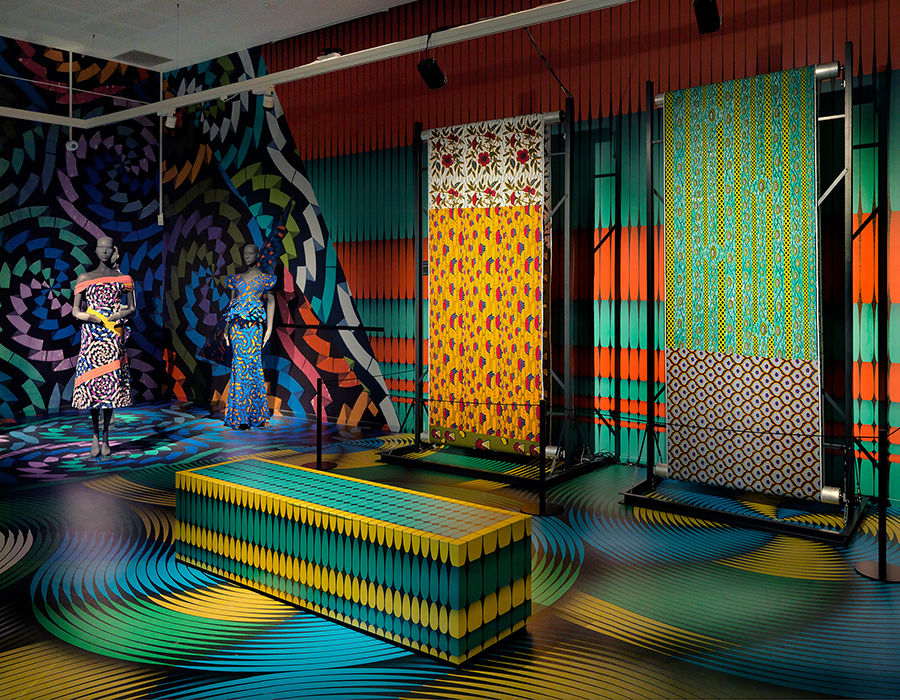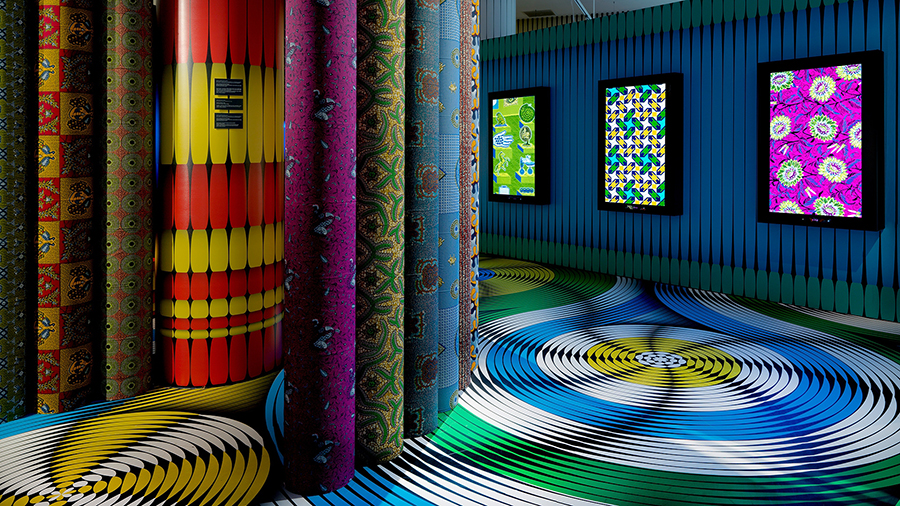
Many fascinating stories of colonialism, manufacturing, selling, trading, culture, design and art make up the 170-year history of the iconic Dutch fabric design brand, Vlisco.
An exhibition “Vlisco 1:1 Un à Un” at the Helmond Museum recently celebrated the anniversary of the company by telling many of the colourful stories and in particular elaborating on and celebrating the link between Vlisco and Africa.

Founded in Helmond in 1846 by Pieter Fentener van Vlissingen, Vlisco merges Dutch and African art and design to produce objects and fabrics. Surprisingly, the first bright, graphic patterns of roller-printed wax fabrics popular in West and Central African culture have their origins in the Netherlands and Indonesia.
While the incredibly vibrant African textile patterns in themselves would have given the exhibition visitors’ much to look at, Vlisco’s creative director, Zara Atelj, gave the exhibition design team the kind of freedom that most commercially slanted exhibitions seldom have. They were asked to “Go crazy, please.”
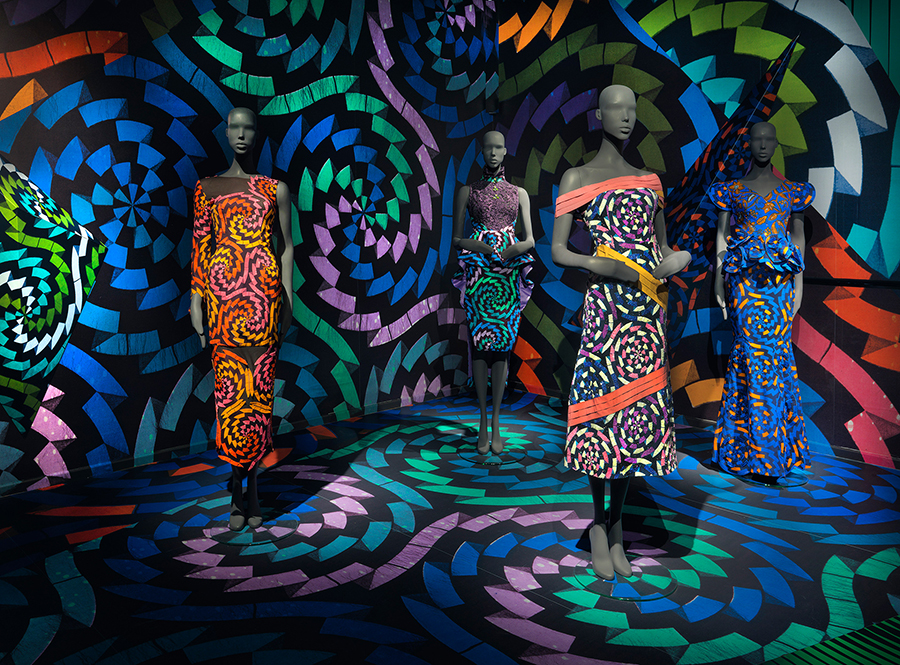
In an article, former Vlisco designer and a key member of the exhibition team, Michiel Schuurman, was quoted as saying about the creative process that “I just like the whole maximalistic approach. Just a bunch of truly creative people hanging out, with no commercial hindrance, makes for a truly radical exhibition.”
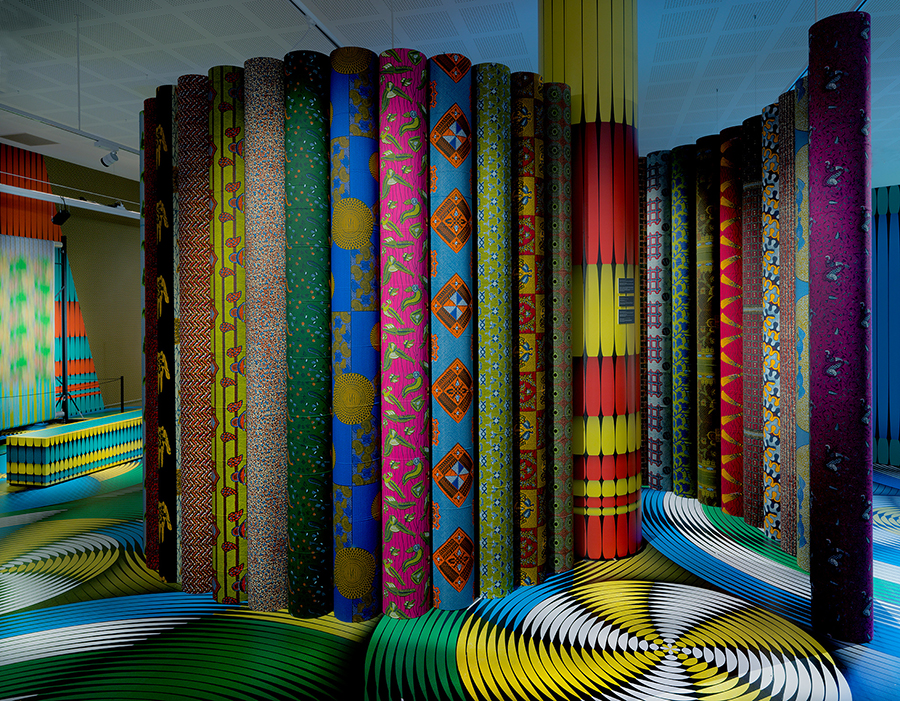
The most radical and head-ache-inducing part of the exhibition were the ‘skins’ of designs by Schuurman with which the exhibition design firm Studio Harm Rensink covered the floors, walls and pillars.
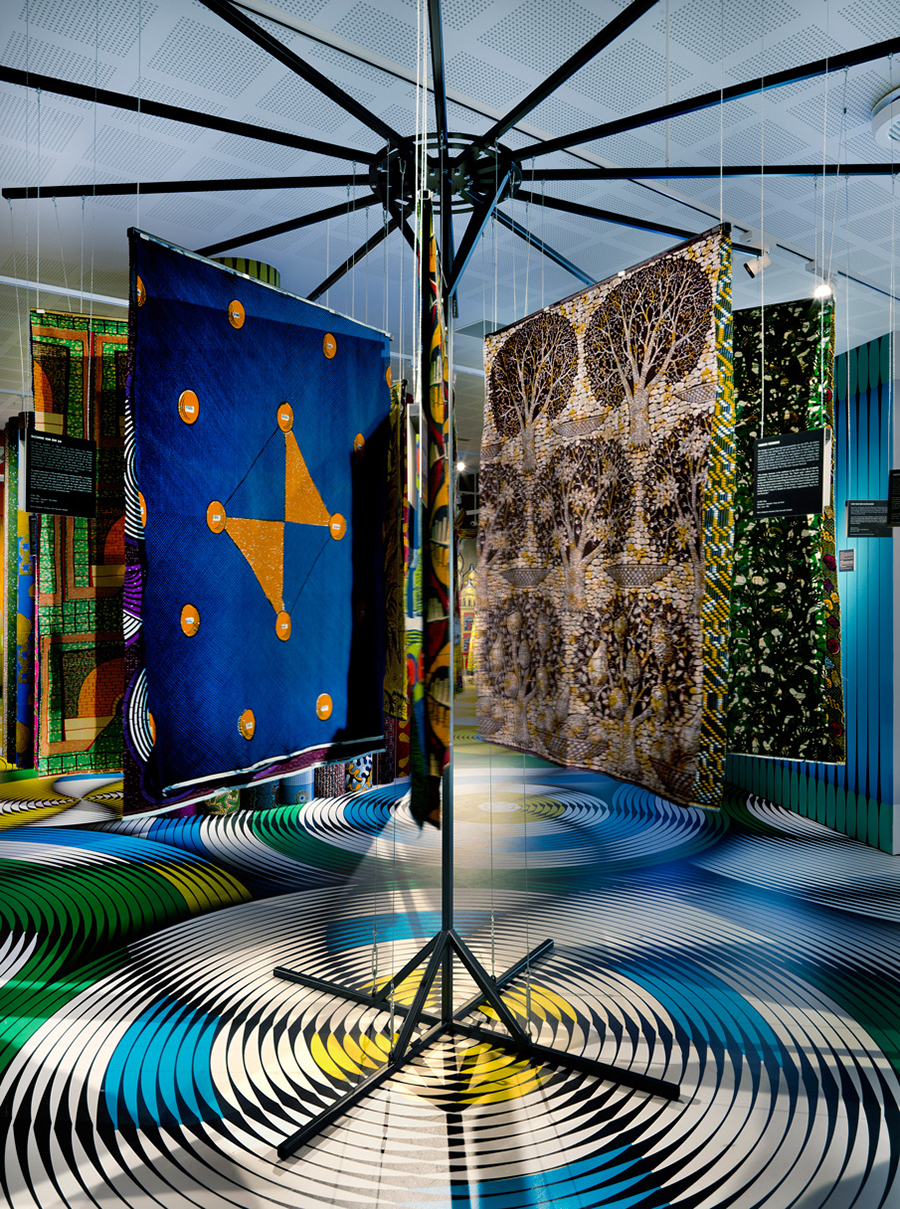
The overall effect of the exhibition, that sheds light on an intriguing collision of colours and cultures, was delightfully overwhelming, immersive and informative. Tuija Seipell.
